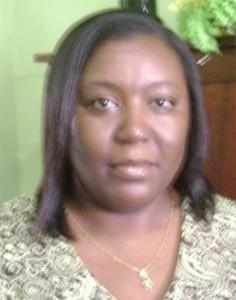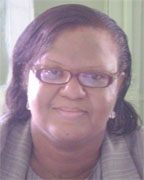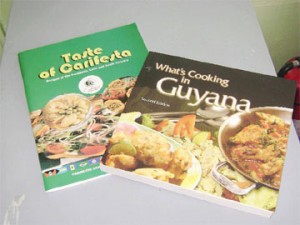— catering to the needs of the tourism industry
The Carnegie School of Home Economics turns out some 1,500 graduates a year, trained to function in the hospitality industry, culinary arts, home economics, tailoring and dressmaking, among other skills, but few stay in Guyana. The demands of the local tourist industry are not met as the economic pull of the more established Caribbean industry and cruise liners is stronger.
Principal of Carnegie Penelope Harris bemoaned this situation last week in an interview with this newspaper. She feels there are enough industries here in Guyana where such skills can be utilised. But the pull factor in the islands has to do with more attractive economic packages and the wider range of opportunities available.
What it means is that the Caribbean tourism industry benefits, the graduates benefit and Guyana loses, since courses at Carnegie are still free of cost.
Catering, hospitality, cosmetology, garment-making and household management are the full-time courses offered at the school, with catering and hospitality being the diploma courses, and all others certificate programmes. The certificate programmes consist of food and beverage service, hot meal preparation (foods that require heat for their preparation and have to be served at a certain temperature, eg sauces and soup), bake shop, garde manger (foods that require no heat for their preparation eg sandwiches and salads), household management, garment construction, hairdressing and cosmetology.

Among the evening programmes offered are elementary cakes and pastries, advanced cakes and pastries, cake decoration, elementary cookery, advanced cookery, crochet and macramé, fabric decoration, floral arrangement and dressmaking. Ad hoc courses are also offered such as housekeeping for the office, etiquette, food service supervision and waiter/waitress service.
The emphasis on food preparation, according to Harris, has always been on local cuisine and locally made products, which encompass a wide range of dishes, some of which have become very popular.
Several of the dishes created by the school have become part of the local cuisine at leading restaurants. “Rice Essequiba,” Harris said, is one of Carnegie’s signature dishes.
In addition to the vocational courses, English, Communication, Mathematics, Entrepreneurial Studies, Visual Arts and Social Studies are compulsory academic subjects for full-time students.

Carnegie also offers catering services for which food preparation is done at the school, unless the client prefers another arrangement.
Harris, a nutritionist by profession, highlighted the fact that the school’s “training restaurant,” the Hibiscus Restaurant, is open to the public from 11.30 am to 1.30 pm on Tuesdays and Thursdays. It generates finances for the school and plays a major role in the practical aspect of the learning process of the students. All meals prepared by Carnegie conform to a balanced diet.
Challenges and successes
Asked about the challenges faced by the Carnegie School of Home Economics Harris said that from an administrative perspective there was need for a more modern building to execute programmes that were of a high standard. She pointed out also that there was much need for the type of modern equipment graduates would be likely to encounter in the industry once they gained employment.
The last time the school had an equipment upgrade was in 2007, when the United States Agency for International Development (USAID) made a donation.
According to Myrna Lee, Vice Principal of the Carnegie School of Home Economics, with whom this newspaper also spoke, the training given to the students meets the need of the tourism industry both locally and internationally, since the certificates are highly respected and the experience garnered is of a high quality.
Highlighting the success stories of the school, Lee pointed to the recipe book What’s Cooking in Guyana, first published in 1973 with a second edition subsequently. This book is widely used by Home Economics students in secondary schools and as a recipe source by homemakers. It is available for sale at a cost of $6,000. Carnegie also published a second recipe book last year, titled A Taste of Carifesta, which contains recipes from the countries that participated in the Caribbean Festival of Arts last year. This book costs $2,500.
At present, the school has 30 full-time students out on internship and another 120 in-house students along with 15 full-time instructors, a number of part-time employees and 13 support staff.

History
The Carnegie School of Home Economics, situated at High and D’Urban Streets, Werk-en-Rust, Georgetown was founded in 1933 with the original goal of relieving unemployment among women. It was called the Carnegie Trade School back then.
Its establishment was achieved through a grant donated by the Carnegie Trustees, a body set up by philanthropist Andrew Carnegie, and an additional grant from the UK.
Its first principal, Ms B Brant succeeded in obtaining the government’s full responsibility for the school in 1937. Today it is funded by the Government of Guyana and it is run by the Ministry of Education. During 1937, a trade section was developed which produced custom-made ladies garments and uniforms for postal workers, with the addition of large-scale catering.
In 1958, the trade aspect of the school was discontinued.
The new curriculum was aimed at giving every girl, as only girls enrolled in the school back then, the opportunity to learn all the skills and attitudes essential for a good family and community life.
According to Magda Pollard, a past principal of the school, girls were originally catered for so as to promote self employment and sufficiency among them, since at that time they were the ones who stayed at home. She added that, as was the custom of the day, it was the woman who was more involved in homemaking and managing although there was no policy stating that males could not attend classes there.
She explained that the men opted for the technical fields and were employed, as opposed to the women. Over the years, males began to attend the institution and were able to learn the art of homemaking and managing. Sometimes they went along with their wives who were enrolled in the school, or other female relatives. She noted also that those men who were employed in the specific fields that required culinary skills attended classes.
At present the school has 11 male students.
During 1988 to 1990, technical and further financial assistance was given by the Association of Canadian Community Colleges and the International Development Agency to enhance the catering programme for the furtherance of the institution.
Harris informed Stabroek News that over the years the school had also evolved into a teacher training institution, but noted that today all teachers are trained at the Cyril Potter College of Education.
Cosmetology and hospitality training are the newest additions to the list of courses being offered by the organisation. According to Harris, it is envisaged that with government support the school will continue to grow and expand so as to offer programmes at a higher level.

